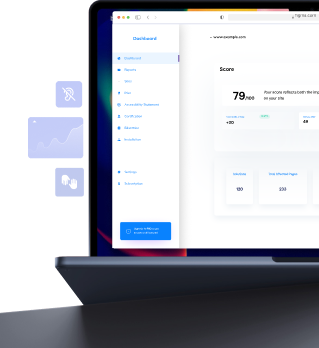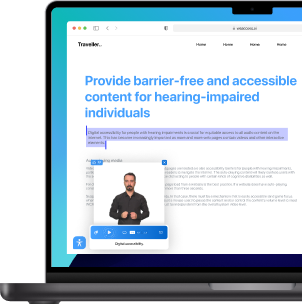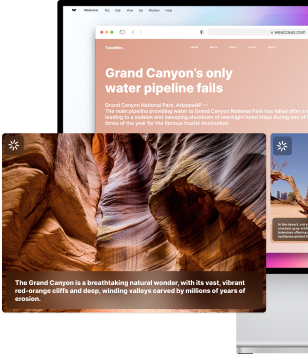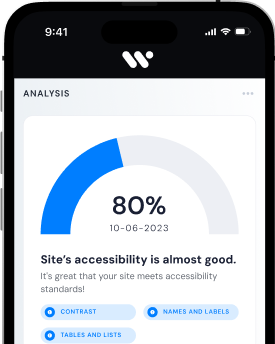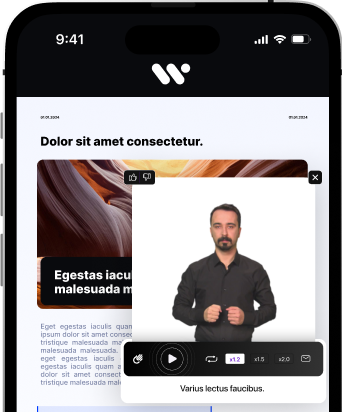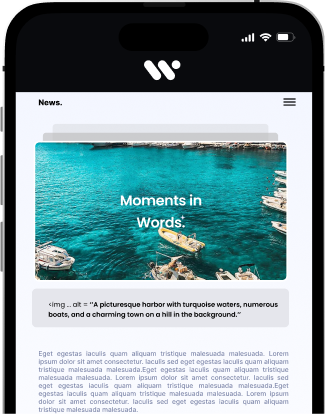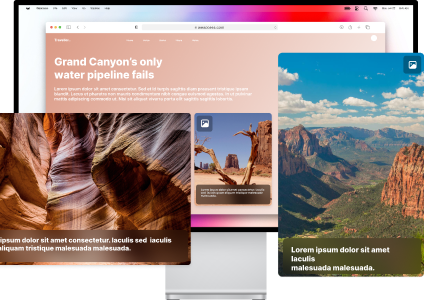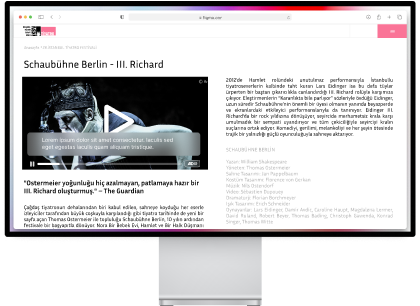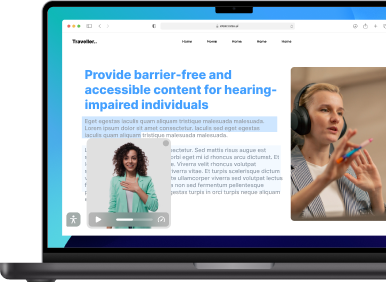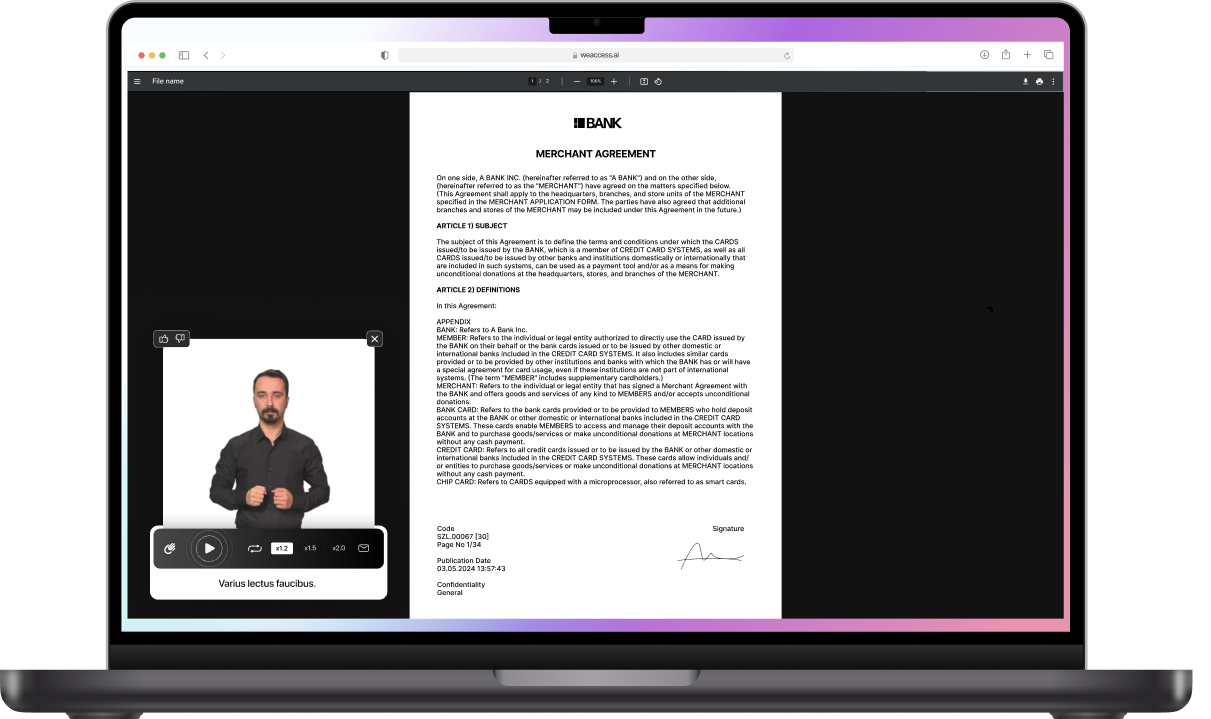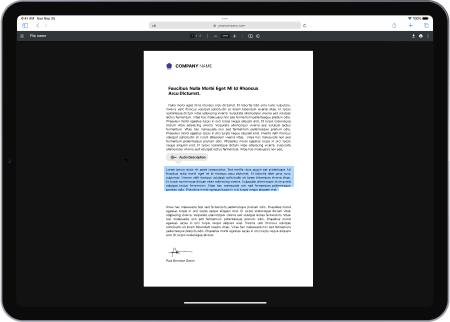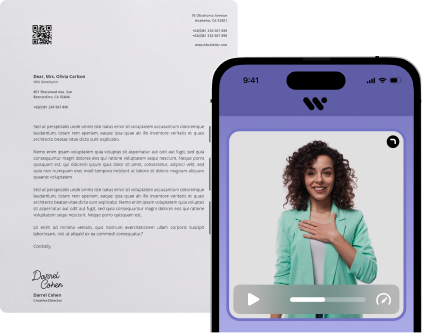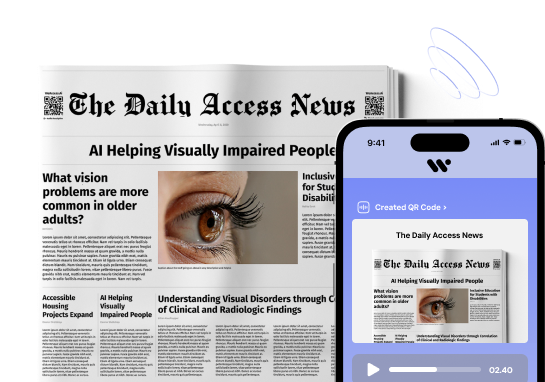Digital Accessibility and Brand Loyalty: Strengthening Your Connection with Customers
Digital Accessibility and Brand Loyalty: Strengthening Your Connection with Customers
Have you ever considered that providing a better experience for disabled users on your website and mobile app can increase customer Brand loyalty towards your brand? Just like at every touchpoint in customer experience, paying attention to accessibility will significantly enhance your customers' loyalty to your brand. Whether you're an e-commerce platform, a hotel reservation website, or an IT company serving individual or corporate clients, it doesn't matter; at any moment, a visually impaired customer can knock on your door. When that door opens, there are many things you can do to encourage the potential customer to make a purchase or avail of your services.
For instance, you can offer special campaigns to new customers, provide discount coupons, or give them small gifts for their product or service purchases. Yes, all of these are significant ways to acquire customers, and if you regularly implement them and don't forget about your existing customers, you can gain very loyal customers.
However, if your website, where you showcase your products and services, is not accessible, for example, when a visually impaired visitor arrives at your site, they won't be able to take advantage of these opportunities. Or if there is limited accessibility, it will decrease the likelihood of visually impaired users choosing you for their subsequent online purchases. This is where the relationship between digital accessibility and brand loyalty comes into play. Wouldn't you want to have more consumers who prefer you for every purchase they make? In this article, we will discuss this topic. But first, let's briefly recap what digital accessibility is for those who are curious.
What is Digital Accessibility and Why is it Important?
Before diving into digital accessibility, let's first understand what accessibility means. Accessibility is the ability for all individuals to navigate freely, perform desired actions, and not encounter any barriers in any open or closed environment. It requires appropriate design and technological advancements in buildings, streets, and even public transportation vehicles to enhance accessibility for disabled individuals.
When it comes to digital accessibility, it encompasses everything we use on our computers, smartphones, and other technological devices. In a website, mobile app, or software, if all users can easily accomplish what they desire, then we can consider it accessible. Of course, it's important not to forget that the term "all users" includes disabled individuals. In other words, for example, a website can only be truly accessible if it has the necessary features for disabled individuals, such as compatibility with screen readers for the visually impaired or contrast options for individuals with low vision.
Disabled Individuals and Digital Accessibility Barriers
The lack of digital accessibility in a website, mobile app, or software designed for computers leaves disabled individuals facing digital access barriers. For example, in an inaccessible website where there is no alternative text for images, a visually impaired user:
- Cannot understand what the images represent if they lack alternative text.
- Can get confused if they cannot determine which page they are currently on.
- May waste time searching for what they need if there is a dropdown menu on a link they are hovering over but cannot understand it due to an accessibility issue.
- These are just a few examples of the issues a visually impaired user can encounter on an inaccessible website, and it wouldn't be incorrect to say that these are just a few of the problems that come to mind. Additionally, different disability groups have different accessibility needs.
Let's illustrate this with an example: Imagine a visually impaired individual and a non-visually impaired individual both searching for a product on the same e-commerce site. The sighted user can quickly find the desired product by looking at both the title and the accompanying images. If this website is accessible, the visually impaired user can also easily find the desired product by navigating through the headings and examining the alt text of the product images. However, if the website has various accessibility issues, it will be very challenging for the non-sighted user to navigate and find the desired product.
The Connection Between Digital Accessibility and Customer Satisfaction
Regardless of whether you run an e-commerce platform or a blog site that produces scientific content, people first look at how your website appears when they visit it. Besides finding the product they are looking for at a reasonable price or obtaining the information they seek, the user experience the website offers is of utmost importance to them. A poorly designed website that makes users wonder, "What kind of place is this?" will likely drive users away from your brand. Only a small number of people who prefer to stay on your website may feel a sense of mistrust, and many of them probably won't choose to visit your website again once their business is concluded.
User experience design is crucial for both brand reputation and acquiring loyal customers. This is where accessibility reflects on the user experience design for disabled individuals.
Just as people shy away from poorly designed websites or mobile apps, for example, a visually impaired individual will prefer to distance themselves from your brand if they encounter issues while making a purchase on your website. Let's say you are an e-commerce platform owner; if you cannot provide an accessible end-to-end experience for a disabled potential customer, from finding the desired product to completing the payment process, you will lose that customer. Losing a customer also means losing a person who could have made frequent purchases from you.
Digital Accessibility and User Experience
Considering the above-mentioned point, it's clear that there is a strong relationship between digital accessibility and user experience. Offering high contrast theme options on your website for individuals with low vision or designing your website according to WCAG 2.1 standards for individuals with no vision are crucial parts of the digital accessibility process. If you prioritize accessibility on your website, disabled users will have a positive experience when they visit you online.
A positive user experience will bring you customers who are likely to return for future purchases if you run an e-commerce network. If you are a blog owner sharing scientific content, a visually impaired student or scholar will tend to revisit your website for their next research work because they notice your focus on digital accessibility and are aware of the accessible experience.
Disabled Users and Access to Digital Services
Smooth access to digital services for disabled users is only possible through a user experience design process that includes them. Even today, disabled individuals face significant challenges in accessing digital resources regardless of their type and level of disability. By ensuring WCAG 2.1 accessibility standards on your website, you can facilitate disabled users' access to digital services.
The Connection Between Digital Accessibility and Brand Loyalty
Now we come to the most important point: the connection between digital accessibility and brand loyalty. If you have read our article up to this point, you have likely started to realize why digital accessibility is essential for your brand.
You have decided to meet accessibility criteria on your website or mobile app and made investments towards that goal, expecting a return on those investments. Naturally, just like any expenses you have made for your business so far, you will also receive a return on this investment. So, what is the reward for providing an accessible experience for customers? It is undoubtedly gaining more new and loyal customers.
Now, when a visually impaired user visits your website, they can accomplish everything without any issues. They can easily navigate through product listings, explore categories, apply filters, and make purchases from an end-to-end accessible experience. Furthermore, they will notice that the designers of the website or mobile app prioritize accessibility, and from that point onwards, they will be more likely to choose your platform.
Moreover, when you adopt a brand approach that focuses on disabled users, you can attract not only loyal disabled customers but also many other loyal customers who
appreciate your efforts for inclusivity. The loyal customer base you build will increase your brand's reputation, and this will further strengthen your connection with customers.
Digital Accessibility and Brand Loyalty
We have come to the most important topic, digital accessibility and brand loyalty. If you have read this far, we are sure that you have started to realise why digital accessibility is important for your brand.
You have decided to provide accessibility criteria on your website or mobile application, you have made investments for this purpose and you are waiting for the return on these investments. Of course, like everything you've ever spent on your startup, it will pay off. But what is the payoff for providing an accessible experience for customers? More new and loyal customers, of course.
Now, when a visually impaired user visits your website, they will be able to do whatever they want without any problems. They will be able to find and buy the product they are looking for on an e-commerce site with an end-to-end experience, read the article they want on a blog site, make money transfers, investments and much more freely on a banking site. Moreover, they will realise that the designers of the relevant website or mobile application attach importance to accessibility and will prefer that platform much more frequently from now on.
Moreover, when you adopt a brand approach that focuses on disabled users, you can gain not only loyal customers with disabilities, but also many loyal customers who are sensitive to this issue. Because disabled users who are satisfied with you will recommend your website to their environment.
Gaining Competitive Advantage with Digital Accessibility
Providing digital accessibility conditions of your website will put you 1 step ahead of your competitors. There may be many companies competing in the same field as you, but if the vast majority of these companies do not attach importance to digital accessibility in their websites and mobile applications, you can get ahead of them all at once by doing the necessary work on this issue.
The only thing you need to do is to analyse the accessibility problems on your website and fix these problems. Immediately afterwards, you can share with the public that you offer an end-to-end accessible experience on your website and TV or social media adverts/posts and make more people aware of it.
Digital Accessibility Strategies to Stay Ahead of Competitors
So how can you provide an accessible experience for disabled users on your website? If you plan correctly, this will be very easy for you.
It will be useful to create the right strategy to provide an end-to-end accessible experience on both your mobile app and your website. Your strategy should basically include the following processes:
- Analysing the key function buttons and links on the website or mobile app that are not accessible,
- Analysing images without added alt text on the website or mobile application,
- Identifying all other factors that may cause accessibility problems on the website or mobile application
- In all these processes, artificial intelligence-based accessibility solutions developed by WeAccess.Ai can help you. With WeAnalyse, you can quickly identify what the problems are on your website, and solve the accessibility problems on your website with the various options offered by WeTool.
Examples of Creating Competitive Advantage with Digital Accessibility Today, both in Turkey and around the world, there are many accessibility problems even in various websites owned by large companies. For example, a popular e-commerce platform serving in Turkey cannot offer a fully accessible experience for disabled users while browsing through the products in its mobile application. When you design a mobile application that meets the digital accessibility criteria, you are already ahead in this regard.
Basically, digital accessibility gives you the following advantages in the race with your competitors:
- If you offer things such as navigating between products, navigating between categories, filtering products on your e-commerce platform in an accessible way, you can differentiate yourself from another e-commerce site that does not attach importance to these issues.
- If you offer your customers an accessible money transfer, investment and daily transactions experience in internet banking, disabled users will prefer you more than banks that have problems in this regard.
- If you are a writer who offers articles on current issues to your readers or if you are the owner of an internet publication created for such a purpose, disabled users will prefer to follow you more than your other competitors when you pay attention to accessibility.
- There are many examples like this. As long as you want to offer a more accessible experience, you can overcome your competitors who do not care about disabled people in this way.
Conclusion
In today's digital age, accessibility is a necessity, not an option. Ensuring digital accessibility on your website or mobile app is not only about complying with legal regulations, but also about providing equal opportunities for all individuals to access and interact with your digital services. By prioritizing digital accessibility, you can increase brand loyalty, attract new customers and strengthen your bond with existing ones. Remember, every interaction counts and by making your digital services accessible, you can have a positive impact on your customers and your business as a whole. You may also be interested in our blog post on digital accessibility and competitive advantage

